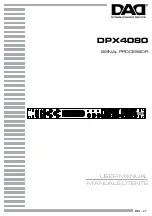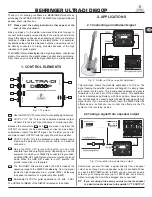
MPYU
Multiply Unsigned
7-120
Syntax
MPYU
dma
Direct addressing
MPYU
ind [, ARn]
Indirect addressing
Operands
dma:
7 LSBs of the data-memory address
n:
Value from 0 to 7 designating the next auxiliary register
ind:
Select one of the following seven options:
* *+ *– *0+ *0– *BR0+ *BR0–
MPYU
dma
15
14
13
12
11
10
9
8
7
6
5
4
3
2
1
0
0
1
0
1
0
1
0
1
0
dma
MPYU
ind [,ARn]
15
14
13
12
11
10
9
8
7
6
5
4
3
2
1
0
0
1
0
1
0
1
0
1
1
ARU
N
NAR
Note:
ARU, N, and NAR are defined in Section 6.3,
Indirect Addressing Mode (page 6-9).
Execution
Increment PC, then ...
Unsigned (TREG)
×
unsigned (data-memory address)
→
PREG
Status Bits
None
This instruction is not affected by SXM.
Description
The unsigned contents of TREG are multiplied by the unsigned contents of the
addressed data-memory location. The result is placed in the product register
(PREG). The multiplier acts as a signed 17
×
17-bit multiplier for this instruc-
tion, with the MSB of both operands forced to 0.
When another instruction passes the resulting PREG value to data memory
or to the CALU, the value passes first through the product shifter at the output
of the PREG. This shifter always invokes sign extension on the PREG value
when PM = 3 (right-shift-by-6 mode). Therefore, this shift mode should not be
used if unsigned products are desired.
The MPYU instruction is particularly useful for computing multiple-precision
products, such as when multiplying two 32-bit numbers to yield a 64-bit prod-
uct.
Words
1
Opcode
















































